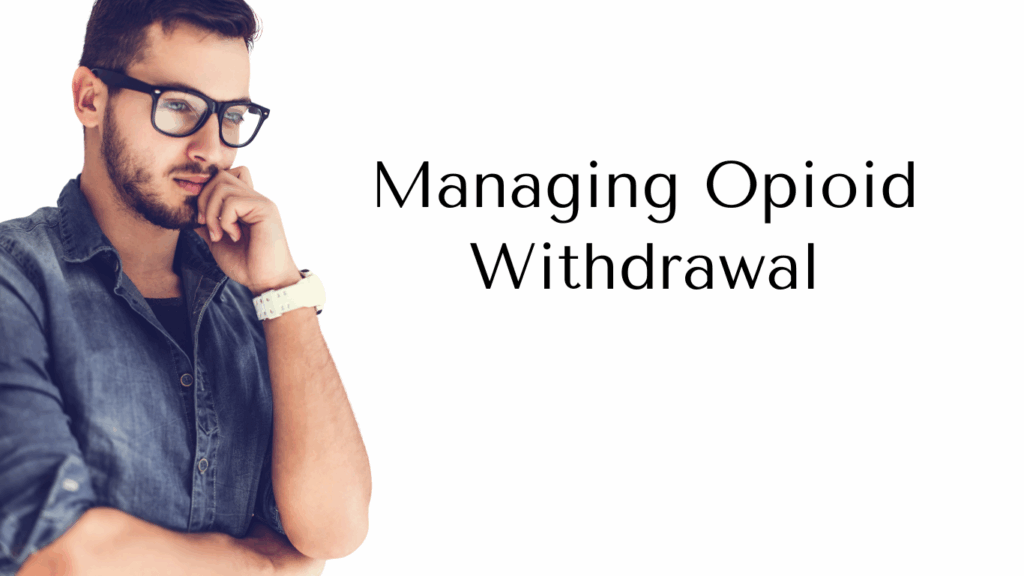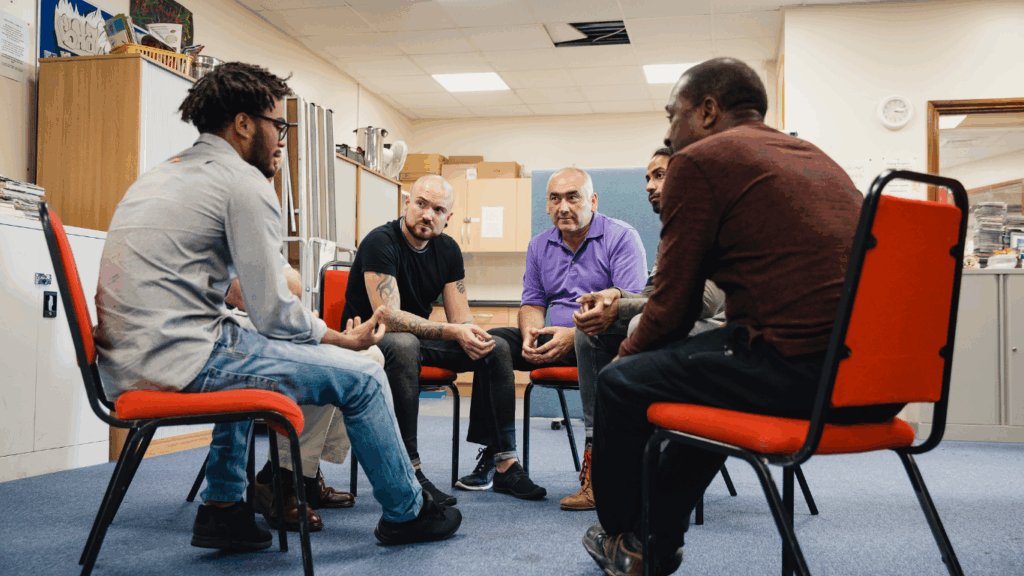Opioid addiction is neither a moral failing nor a sign of weakness; it is a complex medical condition that rewires the brain’s reward circuitry. The good news: evidence-based treatment works, and recovery is possible.
Opioid Addiction by the Numbers
Understanding scale helps break stigma and galvanize action. Consider these recent findings from the Centers for Disease Control and Prevention (CDC), the National Institute on Drug Abuse (NIDA), and peer-reviewed studies:
- Overdose Deaths: The United States logged roughly 83,000 opioid-related overdose deaths in 2023, more than triple the annual traffic fatalities. Synthetic fentanyl drives the majority of deaths.
- Prescription Misuse: Between 21 % and 29 % of patients given opioid painkillers for chronic pain ultimately misuse them; up to 12 % develop OUD.
- Economic Toll: In 2021, opioid addiction cost the U.S. economy $1.02 trillion in healthcare spending, lost productivity, criminal justice expenses, and reduced quality of life.
- Co-Occurring Disorders: Roughly 45 % of people with OUD also meet criteria for an anxiety or mood disorder, highlighting the importance of integrated mental health care.
- Naloxone Saves: Widespread distribution of naloxone (Narcan®) has reversed an estimated 400,000 overdoses since 2014.
Behind every statistic is a son or daughter, employee, or friend whose life trajectory can often change permanently with the right support.
What Exactly Are Opioids?
Opioids are a class of drugs that bind to specific receptors in the brain and spinal cord, muting pain signals and releasing dopamine, the neurotransmitter responsible for pleasure and reward.
They fall into four main categories:
| Category | Example Medications | Key Points |
|---|---|---|
| Natural (Opiate) Alkaloids | Morphine, Codeine | Directly derived from the opium poppy. Highly effective painkillers but ripe for misuse. |
| Semi-Synthetic | Oxycodone (OxyContin®), Hydrocodone (Vicodin®), Oxymorphone | Chemically modified opiates; widely prescribed after surgeries or injuries. |
| Fully Synthetic | Fentanyl, Tramadol, Methadone | Lab-made; fentanyl is up to 50× stronger than heroin, making dosing errors and overdoses more likely. |
| Illicit / Street Opioids | Heroin, counterfeit fentanyl pills (“M-30s”) | Unregulated potency, often adulterated with other drugs such as xylazine (“tranq”). |
Opioids work remarkably well for acute pain—childbirth, a fractured bone, or post-operative care. Problems arise when prescriptions extend beyond a few days or opioids are taken in ways other than prescribed (e.g., crushing and snorting pills).
Over time, the brain adapts: more drug is needed to achieve the same effect (tolerance), and stopping suddenly triggers severe flu-like symptoms (withdrawal). This biochemical tug-of-war lies at the heart of opioid use disorder.
How to Recognize Opioid Use Disorder
Because OUD often begins with a doctor’s prescription, warning signs can be subtle at first. The Diagnostic and Statistical Manual of Mental Disorders (DSM-5-TR) outlines 11 criteria; meeting even two in 12 months indicates a disorder.
Below are the most common red flags we encounter at Hand in Hand Recovery:
- Escalating Dose – Taking larger amounts or using the drug for longer than intended.
- Failed Cutbacks – Repeated attempts to quit or reduce use, followed by relapse.
- Time Sink – Hours spent obtaining, using, or recovering from opioids.
- Cravings – Intense psychological or physical urge to use.
- Neglecting Roles – Declining performance at work, school, or home.
- Social Fallout – Strained relationships, isolation, or secretive behavior.
- Hazardous Use – Driving while impaired, combining opioids with alcohol or benzodiazepines.
- Continued Use Despite Harm – Ongoing use even after overdose, legal issues, or health scares.
- Tolerance – Needing markedly higher doses for relief or euphoria.
- Withdrawal – Experiencing symptoms like nausea, chills, and body aches when skipping a dose.
Professional assessment is the safest next step if you or your loved one checks any boxes on this list. Early intervention prevents the spiral from occasional misuse into full-blown addiction.

Opioid Withdrawal: What to Expect and Why It’s Risky Alone
Withdrawal is both a physiological rebound and a psychological storm. Classic symptoms surface within 8–12 hours of the last short-acting pill or heroin dose (longer for extended-release medications):
- Yawning, teary eyes, runny nose
- Sweating, gooseflesh, alternating chills, and hot flashes
- Restless legs and cramping muscle aches
- Nausea, vomiting, diarrhea leading to dehydration
- Elevated heart rate and blood pressure
- Irritability, severe anxiety, or depressive mood
- Intense drug cravings
The peak occurs between 36–72 hours, gradually subsiding over a week; yet, insomnia, anxiety, and cravings can linger for months (post-acute withdrawal syndrome, or PAWS). Although opioid withdrawal is rarely fatal by itself, dehydration, electrolyte imbalance, and co-occurring medical conditions (heart disease, pregnancy, infections) can turn it into a medical emergency.
That’s why detoxification in a licensed facility—often stabilized with medications like buprenorphine—is strongly recommended.
Medication-Assisted Treatment (MAT)
MAT combines FDA-approved medications with counseling and behavioral therapies. It is not “substituting one drug for another” but rather a scientifically validated approach that:
| Medication | How It Works | Typical Setting |
| Buprenorphine (Suboxone®, Subutex®) | Partial opioid agonist; eases withdrawal without full euphoria. | Office-based, IOP, PHP |
| Methadone | Full agonist administered in tightly regulated clinics; best for severe OUD. | Daily clinic visits initially |
| Naltrexone (Vivitrol® injectable) | Opioid antagonist; blocks effects of opioids for ~30 days. | Post-detox, highly motivated clients |
The medication chosen depends on medical history, addiction severity, and client preference—decisions best made with a board-certified addiction medicine physician.
Levels of Care for Opioid Addiction
Every recovery journey is unique. We offer a stepped-care model so clients can enter at the intensity that matches their needs and transition smoothly as they stabilize.
Detoxification (3–10 Days)
- 24/7 medical monitoring
- Symptom-targeted medications (e.g., clonidine for blood pressure, buprenorphine for cravings)
- Nutritional support and hydration therapy
- Emotional preparation for ongoing treatment
Partial Hospitalization Program (PHP)
- 30–35 hours per week, typically Monday-Friday
- Daily group therapy (CBT, DBT, trauma-informed)
- Two individual therapy sessions weekly
- Psychiatric evaluation and medication management
- Family therapy and educational workshops
- On-site 12-step or SMART Recovery meetings
- Ideal for clients stepping down from residential rehab or those needing high structure without overnight stay
Intensive Outpatient Program (IOP)
- 9–12 hours per week in three to four sessions
- Evening and weekend tracks for working adults
- Focus on relapse-prevention planning, life-skills training, and vocational guidance
- Random urine drug screens for accountability
- Peer support groups and alumni activities
- Perfect bridge between PHP and traditional outpatient therapy
Outpatient & Aftercare
- Weekly or bi-weekly counseling
- Medication management check-ins
- Alumni network events, mentorship, and recovery coaching
- Telehealth options to maintain engagement despite geography or schedule changes
This continuum allows clients to “step down” gradually, reducing relapse risk during high-stress life transitions.
The Role of Co-Occurring Mental Health Disorders
Depression, anxiety, PTSD, and bipolar disorder frequently accompany OUD. Sometimes trauma sparks opioid misuse; other times, chronic opioid exposure alters mood regulation pathways. Integrated treatment at Hand in Hand Recovery means:
- Dual-diagnosis psychiatric care
- Evidence-based therapies
- Dialectical Behavior Therapy
- Experiential Therapy, Anger Management
- Accountability and Recovery
- Mindfulness and Meditation
- Adventures in Nature Therapy
- Art Therapy
- On-site or virtual family therapy to break cycles of codependency or enabling
- Collaboration with primary-care doctors to manage pain, sleep, and overall health without addictive medication
Addressing mental health and substance use simultaneously improves outcomes, lowers suicide risk, and bolsters long-term sobriety.
Social Determinants and the Wider Community Cost
Opioid addiction doesn’t exist in a vacuum. Housing instability, unemployment, and limited access to healthcare all inflate risk. Rural counties often lack MAT providers; urban centers may grapple with contaminated drug supplies and social stigma. Community-level costs include:
- Increased foster-care placements due to parental substance misuse
- Overburdened emergency departments and first responders
- Lost productivity—estimated $92 billion in 2022 alone
- Rising rates of infectious diseases (HIV, hepatitis C) from shared needles
Hand in Hand Recovery partners with local hospitals, courts, and nonprofits to build a wraparound safety net—linking clients to vocational training, sober-living housing, legal aid, and peer recovery coaches.
Harm Reduction: Meeting People Where They Are
Not everyone is ready for abstinence on day one. Harm-reduction strategies keep people alive long enough to choose recovery:
- Naloxone Distribution: Free Narcan kits and training for clients, families, and community members.
- Fentanyl Test Strips: Empower users to test drugs and make safer decisions.
- Safe-Use Education: Overdose-recognition protocols, avoiding mixing opioids with alcohol or benzodiazepines.
- Syringe-Service Programs: Reduce infectious disease transmission and offer a gateway to treatment referrals.
Compassionate engagement—not judgment—creates trust and increases the likelihood that someone will accept help when ready.

Life After Treatment: Building Sustainable Recovery
Completing a program is only chapter one. Sustained recovery hinges on daily actions and support systems:
- Medication Adherence: Continuing MAT or non-opioid pain management as prescribed.
- Peer Fellowship: 12-step groups (NA), SMART Recovery, or Faith-Based meetings.
- Healthy Structure: Balanced nutrition, exercise, sleep, and mindfulness practices.
- Service Work: Giving back reduces isolation and reinforces purpose.
- Ongoing Therapy: Processing setbacks, grief, or trauma that may arise post-treatment.
Frequently Asked Questions
Can I just taper at home?
While some people manage a slow taper under a physician’s guidance, abrupt cessation can be dangerous. Medical oversight significantly increases comfort and safety.
Is MAT trading one addiction for another?
No. MAT medications are delivered at therapeutic doses that stabilize brain chemistry without causing a “high.” They restore, not impair, functioning.
How long will treatment take?
Effective recovery is not one-size-fits-all. Detox may last a week, PHP 4-6 weeks, IOP 8-12 weeks, and outpatient care may continue for months. Research shows that treatment longer than 90 days yields the best outcomes.
What if I relapse?
Relapse is a signal to adjust, not abandon, your recovery plan. We analyze triggers, fine-tune medication, and reinforce coping skills. Many clients discover that relapse becomes less frequent and shorter in duration as they progress.
Taking the First Step: How to Get Help Now
Opioid addiction is among the most pressing public health challenges of our generation, yet it is also one of the most treatable. Advances in medication-assisted treatment, psychotherapy, and community support mean the pathway to a fulfilling, drug-free life has never been clearer.
If pain, prescriptions, or illicit opioids have stolen your peace, let today be the turning point. Reach out, ask questions, and step into a new story—hand in hand with people who understand. You do not have to navigate this alone. From your first phone call to your first sobriety anniversary and beyond, Hand in Hand Recovery walks beside you—because sustained freedom from opioid addiction is not only achievable, it’s what you deserve. Call us today at (470) 280-2791 to get started.

 info@handinhandrecovery.com
info@handinhandrecovery.com 3411 Austell Road Suite 200, Marietta, Georgia, United States
3411 Austell Road Suite 200, Marietta, Georgia, United States

